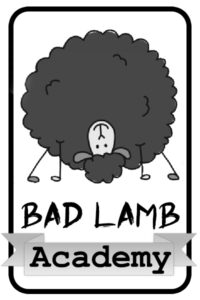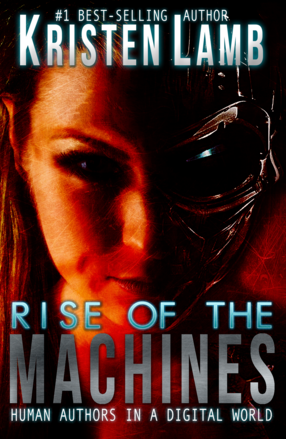
Log-lines. Sigh. I introduced this concept in my last post , Writer’s Block: Is It Laziness or a Critical Part of Being a Longtime Author? Today we’re going to deep-dive exactly HOW to boil our novel down to a single sentence. Some of you might be wondering if I was trying to give you a heart attack with my title. Maybe you believe this feat is impossible. AN ENTIRE NOVEL IN ONLY ONE SENTENCE?
Maybe something simple, plebeian and commercially formulaic *flips hair* but ART cannot be forced into a box.
Yes. Yes it can.
I know, I know. Your novel is over four-hundred pages with made up technology and wizards and folding space using enchanted Thigh Masters….
I hear you. Calm down.
A log-line is a lifeline that will allow you to pitch a novel (or series) in ONE—YES ONE—sentence. The log-line is going to save you time, energy, and sanity (save the crazy for the fiction).
We’ll get to how a log-line is going to do ALL this AND give you six-pack abs in only five minutes a day in a moment…
***Legal Disclaimer: Consult your psychiatrist before believing any writing tool will give you six-pack abs. The giant pink bunny in the corner lies, too FYI.
Anyway…
I used to try to teach story structure from the perspective of an editor, but I found that my approach was flawed. Why? Because editors are like building inspectors. We have skills best used on a finished product. We’re trained to look for structure problems.
Is that a good skill? Sure. But do building inspectors design buildings?
No.
Architects do. Architects employ creativity and vision to create a final structure. Hopefully, they will have the necessary skills to create and design a structure that will meet code standards.
Creativity and vision are not enough. Architects need to learn mathematics and physics. They need to understand that a picture window might be real pretty, but if they put that sucker in a load-bearing wall, they won’t pass inspection and that they even risk a fatal collapse.
Aestheticism must align with pragmatism.

This insight made me step back and learn to become an architect. When it comes to plotting, I hope to teach you guys how to have the creative vision of the designer, but with the practical understanding of an inspector.
We’ve discussed how plot works on a micro-scale (scene and sequel). After that, we panned back for an aerial shot, and discussed how great stories–like amazeballs rollercoasters—are addictive by design.
I’ve also covered how the single most important component to plot is the opposition, and l even have a tested method to make sure your core idea is actually solid enough to be the foundation for an entire novel.
So what’s this log-line thingy?
Basically, we should be able to tell someone (an agent) what our story is about in one sentence. That is called the ‘log-line.’ Log-lines are used in Hollywood to pitch movies.
In this post we’ll cover two different ‘types’ of log-lines. One is the big picture of your story idea. We’ll cover that first.
But, if you read my previous post, I presented a formula for you to use before you even start writing your book. This is the more functional log-line. Think of this second ‘type’ of log-line as your story prototype. It is a scaled down version to make sure you have all the critical story pieces and YES, it will reveal the whole story.
More on that in a bit.
One resource that should be in every writer’s library is Save the Cat by Blake Snyder. It’s a book on screenwriting, but every writer can benefit enormously from Snyder’s teaching.
In the world of screenwriting there is a tenet, “Give me the same, but different.” This axiom still holds true when it comes to novels.
Our story cannot go so far off the deep end that readers cannot relate, yet our story needs to be different enough that people don’t just think it’s a retread.
We as writers have to negotiate this fine balance of same but different, and that is no easy task.
So let’s look at components of a great log-line:
Great log-lines are short and clear.

I cannot tell you how many writers I ask, “So what’s your book about?” and they take off rambling for the next ten minutes. Often why writers are so terrified of the pitch session is that they cannot clearly state what their book is about in one to three sentences.
Here is a little insider information. When we cannot whittle our entire story into a maximum of three sentences, that is a clear sign to agents and editors that our story is structurally flawed. Not always, but more often than not. Your goal should be ONE sentence. What is your story about?
A good log-line is ironic.
Irony gets attention and hooks interest. Here’s an example:
The Green Mile is about the lives of guards on death row leading up to the execution of a black man accused of rape and child murder who has the power of faith healing.
What can be more ironic than a murderer having the power of healing? Think of the complex emotions that one sentence evokes, the moral complications that we just know are going to blossom out of the ‘seed idea.’
A good log-line is emotionally intriguing.
A good log-line tells the entire story. Like a movie, you can almost see the entire story play out in your head.
During a preview tour, a theme park suffers a major power breakdown that allows its cloned dinosaur exhibits to run amok.
Didn’t you just see the entire movie play out in your head with that ONE sentence? Apparently Steven Spielberg did, too and that’s why he took Michael Crichton’s novel Jurassic Park and made it into a blockbuster movie.
A good log-line will interest potential readers.
Good log-lines exude inherent conflict. Conflict is interesting. In Save the Cat, Blake Snyder relays stories of how he would take his log-line to Starbucks and ask total strangers what they thought about his idea.
This is a great exercise for your novel.
Pitch to friends, family, and even total strangers and watch their reaction. Did their eyes glaze over? Did the smile seem polite or forced? If you can boil your book down into one sentence that generates excitement for the regular person, then you know you are on a solid path for your novel.
Yet, if your potential audience looks confused or bored or lost, then you know it is time to go back to the drawing board. But the good news is this; you just have to fix ONE sentence.
You don’t have to go rewrite, revise a novel that is confusing, convoluted, boring, arcane, ridiculous, etc.
Think of your one sentence as your scale-model or your prototype. If the prototype doesn’t generate excitement and interest, it is unlikely the real thing will succeed. So revise the prototype until you find something that gets the future audience genuinely excited.
You have your log-line. Now what?

Your log-line is the core idea of your story. This will be the beacon of light in the darkness so you always know where the shore is versus the open sea. This sentence will keep you grounded in the original story you wanted to tell and keep you from prancing down bunny trails.
The Fear Factor
Fear is probably the most common emotion shared by writers. The newer we are the more fear we will feel. A side-effect of fear is to emotionally distance from the source of our discomfort.
This is why so many first-time novels fall apart.
I can tell everything that is wrong in a novel with a single glance at the log-line. Conversely, I can tell a writer what precisely needs to be fixed by looking at the log-line.
Does the story have a core problem? Is it a large enough/interesting enough problem to merit a whole novel? What are the stakes? Is there a ticking clock or have we given the MC forever to get around to accomplishing the goal?
If you’re like me and botched your first (hundred) attempts to write a novel, RELAX. It takes time to develop the level of sadism required to write spectacular stories. Not everyone is a born psychopath like George R.R. Martin.
New writers (in particular) tend to shy from any source of conflict, but conflict is the life blood of fiction. Log-lines can show us our story is flat-lining and WHY.
One of the best ways to learn how to write log-lines is to go peruse the IMDB (Internet Movie Database). Look up your favorite movies and see how they are described.
You can even look up movies that bombed and very often see the log-line was weak and the movie was doomed from the start. Look up movies similar to the story you are writing. Check out movies similar to the story you want to tell.
Your Log-Line As Prototype

Some of the above examples are fantastic to pitch a book to, say, an agent. We still get an idea of the story. If cloned dinosaurs start running amok in a theme park, then one gets the idea that there are probably people stranded/in danger and that the point of the story is to a) escape and b) do something about the dinosaurs.
This is good enough but isn’t as specific as I would recommend if, say, you’re planning a new novel for NaNoWriMo, which is why I recommend using a certain formula.
Why is this so important?
Think about an architect responsible for a sky scraper. Such a large building will require a ton of money, materials, and time, so what does the architecture firm do first? They create a scaled down replica before ever breaking ground. This makes it far simpler to see critical flaws or areas that could be enhanced.
Same with a car manufacturer. Engineers have a fabulous idea for a new super car? They don’t simply start building a full-size, fully operational super car. They begin with the prototype. This saves time, effort, energy…and heavy drinking.
It’s the same for a novel. It is SO much easier to spot any problems with the log-line and tweak THAT, then it is to kill yourself writing 70,000-110,000 words only to THEN try and go BACK and try to figure out why the story isn’t working.
Here is the formula I use to create a solid log-line (story).
Intriguing protagonist + active verb + core story problem (antagonist/Big Boss Troublemaker) + stakes + ticking clock.
Notice I Said ‘Intriguing Protagonist’

If I write a log-line that says:
Susan must locate her birth mother and convince her to donate a kidney before her daughter dies from an incredibly rare genetic disease.
At first glance it seems I have all the pieces, right? I have an active goal (locating birth mother for kidney). There are HIGH stakes (daughter could die and we are dealing with a rare genetic disease so unknown grandparent is likely only option) and a ticking clock (daughter will not last long without a kidney).
But who the heck is Susan? What did I say that gave y’all ANY idea about who she is? This is where that ‘ironic/intriguing’ will help you out. Ideally, we want to cast the protagonist who will have the toughest time talking someone out of a kidney (as if that isn’t already difficult).
Example A:
A recently divorced, overworked stay-at-home mom must locate her birth mother and convince her to donate a kidney before her daughter dies from a rare genetic disease.
Here we now have a clearer picture of our protagonist, and this is a perfectly great log-line depending on genre and how gritty you want to write. But a stay-at-home mom isn’t a super hard sell. She’s feasibly been abandoned (her husband left her for another woman). She’s rather sympathetic.
We get she was adopted and there are plenty of challenges ahead, but once she reunites with her birth mother, the tough part, by and large, is seeing if a stranger is willing to part with a kidney.
Example B:
After serving ten years of hard time for drug trafficking, an estranged mother recently reunited with her child must locate her own birth mother and convince her to donate a kidney before her daughter dies from a rare genetic disease.
See how this alteration changes the entire feel of the story as well as the stakes for all involved? Now we are dealing with a woman crushed by guilt, struggling to reenter society and remain clean.
The one dream that probably kept her sane in prison was that she would one day hold her daughter again. Though she IS reunited with her daughter, she regains custody from the courts just in time to watch her child die…unless she can perform this HERCULEAN feat.
We know from the log-line she will find the woman who put her up for adoption, but instead of Susan the sympathetic homemaker, she is Susan with the track marks, bad tattoos, and a history steeped in guilt and shame. Serious guilt/shame because, had she not done so many hard drugs, she would have been a perfect match for her daughter.
Both log-lines would make excellent stories, just one is far grittier from the get-go. See how, by simply changing blocks around, we can completely change the entire story? I hope this example helped clarify the whole ‘log-line’ concept.
So here is an exercise.
See if you can state your novel in one sentence. It will not only help add clarity to your writing and keep you on track, but when it comes time to pitch an agent or hook readers to BUY, you will be well-prepared and ready to knock it out of the park.
Practice on your favorite movies and books. Work those log-line muscles!
We are having trouble with a plug-in for payment. Will re-list classes when customer support responds and helps us remedy the issue. Apologies for any inconvenience.
What are your thoughts?
Does this make plotting seem more doable? Outlines make my left eye twitch, but I find this ‘trick’ very handy. Can you now see the component parts of a good story more clearly?
I will be uploading classes, so any suggestions for what classes you’d like me to offer?
Classes!
Sorry for the delay. Event Espresso took a couple days to get back to us and this was a known bug *great gnashing of teeth*. Apologies for any inconvenience, but I am offering an additional DISCOUNT for the log-lone classes, $10 off using Pitch10 and extending the deadline for the discount of Binge20, $20 off for the plotting class.
Practice Your Pitch: Master the Log-Line THIS THURSDAY 9/16/21
Register HERE and use Pitch10 for $10 off if register by 9/15
Practice Your Pitch: Master the Log-Line 9/14/21
Register HERE and use Pitch10 for $10 off if register by 10/1/21
Bring on the Binge: How to Plot & Write a Series 9/30/21
Register HERE and use Binge 20 for $20 off until 9/21/21
I LOVE hearing from you!
To prove it and show my love, for the month of SEPTEMBER, everyone who leaves a comment I will put your name in a hat. If you comment and link back to my blog on your blog, you get your name in the hat twice. What do you win? The unvarnished truth from yours truly. I will pick a winner once a month and it will be a critique of the first 20 pages of your novel, or your query letter, or your synopsis (5 pages or less).
August’s winner is Jan C. Johnson. Congratulations! Please email your pages (250 words is a page) in a Word doc, double-spaced 12 point Times New Roman font, with one-inch margins to kristen at wana intl dot com. Yes, I am being picky but it keeps me from going blind…-er. Also please put CONTEST WINNER in all caps so I see you in the sea of spam. Congratulations!








18 comments
5 pings
Skip to comment form
Loglines have been on my radar a lot lately, so I appreciate the last two articles (a lot!)
Ah, I get it. It’s like when Inigo Montoya said to the Dread Pirate Roberts, “Let me explain…no, there is too much. Let me sum up…”
Author
That…is …AWESOME!
Since your last post, I have improved my WIP log-line from:
“An ostracized foundling must earn admittance to a band of adventurers commissioned to find a missing princess, if he is ever to find his own missing identity.”
to
“An ostracized foundling must defeat his long-lost brother who is plotting to seize power over every living soul, before the death of the Queen of Souls passes the power of life and death into the wrong hands.”
This is so helpful, thank you!
I like your log-line formula, I’ll have to try that out. I already freak out when agents ask to submit an outline, but the pitches are daunting. We have 30 seconds to hook our dream agent/editor.
Your examples make the process so clear that I’m sitting down this afternoon to drastically improve the logline for my WIP. Thank you!
Loglines are harder than writing the novel. Thanks for the tips, Kristen!
Kristen,
I’m *still* referring to the logline I wrote in your logline workshop earlier this year! It’s great practice when people ask “what’s your book about” — I share my logline. However, I find that I need to have the “general idea” of the story I want to write, *before* I can really create a logline for it.
Which leads me to… your request for (more) class/workshop ideas. I’m still looking for methods to try for laying out a series *and* the individual books in that series. I’ve been watching Brandon Sanderson’s BYU 318R lectures over on YouTube, which has given me some ideas how to plot the series arc, as though the series is straight urban fantasy (rather than paranormal romance).
Being a person who struggles with decisions (seriously, chocolate or vanilla? Just kidding — CHOCOLATE *wink*), I struggle to lay out an idea that doesn’t sprawl all over and get TOO detailed for this high-level planning. Especially if I change something as I’m working it all out. Right now, I’m refining my BBT (and proxies!). I’m testing out “what if this happens…” again and again. I would love some suggestions or tools or whatever, that would help me wrap my head around how to do all of this. (Frankly, I just need the computers in the TV show The Expanse — I’m sure that would solve ALLLLLL my writing problems. LOL)
Constantly revising my revisions until I’m cross-eyed,
Anne in Arizona
This is a great post. It gave me a lot to think about. Thanks. I will be posting the link on my blog.
I have tried many log-line formulas. After trying your formula last week and improving upon it again after reading this blog – I believe I have my log-line. Thanks! 🙂
When in doubt, always Princess Bride.
“The spoiled second son of a rich family vows revenge once everyone he loves is gone–he’s lost his home, his family, and even his face.”
The best way to master the art of the logline? Practice by reverse-engineering loglines from books/movies you already know by heart. If you had to pitch your favorite movie to a friend in one sentence, how would you convey everything exciting and essential about it? (Hint: It requires including far less detail than you might think.)
Author
Amen to that!
Hi Kirsten great article -set me thinking how to reduce waffle in describing What Glass Ceiling? and have reduced the synopsis to one sentence of varying lengths. For the intention of your article would you , and others, mind letting me know which seems to convey the most to someone with no knowledge of the book’s content?
‘What Glass Ceiling?’ is the story of an extraordinary Australian woman whose determination and courage against discrimination lead her to being accepted in 2017 into the National Pioneer Women’s Hall of Fame, and recognised for 2021 International Women’s Day by BORAL for being their first female accountant in 1949 and ultimately becoming an inspirational leader for future generations. or
‘What Glass Ceiling?’ is the story of an Australian woman whose determination and courage against discrimination from the 1930s onwards became an inspirational leader for future generations, leading her to being accepted into a Women’s Hall of Fame in 2017, and recognised for 2021 International Women’s Day. or
‘What Glass Ceiling?’ is the story of an Australian woman whose determination and courage against discrimination from the 1930s onwards became an inspirational leader for future generations.
I’m favouring the middle logline but is it still too long?
with thanks
Suzanne
“…whittle our entire story into a minimum of three sentences…” I think this is the exact opposite of what you mean. Don’t you mean “no more that three sentences”? Which is to say, a MAXIMUM of three sentences.
Author
Oh probably. I work very hard to edit these to be as clean as possible, but since I don’t charge, there is only so much time I can spend on that. I rely on folks like you to spot these peccadilloes and oopses so I can go correct them. That is a great catch! Trust me, after you’ve read the SAME post 15 times? You just cannot see it.
But YES, you are correct. My brain got it twisted. You want the entire concept in a MAXIMUM of three sentences.
[…] Log-lines had traditionally been more of a movie thing, but in a time that places a premium on high concept plots and when Twitter pitching is a thing, they’re creeping into the publishing world. Kristen Lamb has some advice on how to craft them. […]
[…] been reading a bit about “log-lines” recently. A log-line is supposed to be a one sentence summary, mainly for “pitching” […]
[…] The Log-Line: Can You Pitch Your ENTIRE Story in ONE Sentence? […]
[…] doing something as simple as writing out a log-line can do WONDERS. With a log-line, we know what our story is ABOUT. If we can scribble in some main […]
[…] The Log-Line: Can You Pitch Your ENTIRE Story in ONE Sentence? […]